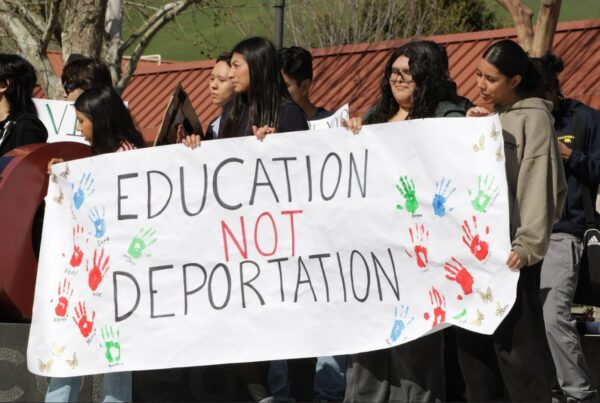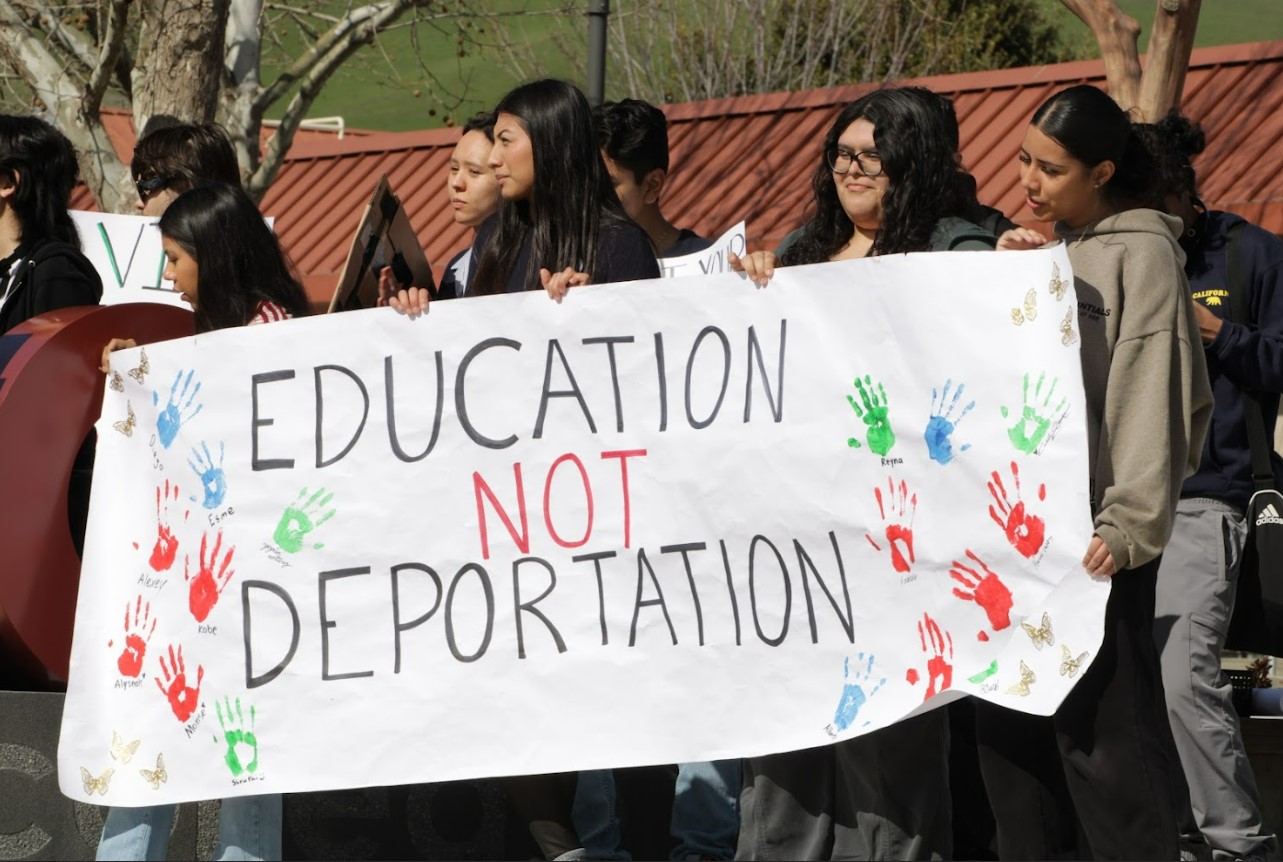By Diane Wong
October 17th, 2025
For the first time in over half a century, the U.S. immigrant population has declined by more than a million people since Trump took office in January. Between January and June of this year, the foreign-born population fell from 53.3 million to 51.9 million, a decline that coincides with an unprecedented expansion of the immigration enforcement apparatus. This expansion has increasingly targeted all unauthorized immigrants, including those with no criminal records, through arrests, detentions, and removals.
Over the past several months, a surge of video footage has emerged showing ICE agents conducting arrests in public streets, workplaces, and residential neighborhoods, often employing visible force and physical restraint that has sparked widespread concern. Many of these arrests have been documented in cities with “sanctuary” policies or Democratic leadership, including Chicago, Houston, Los Angeles, and New York. As of September 2025, the Department of Homeland Security (DHS) reported that more than 400,000 deportations have taken place since the beginning of the year, placing the agency on track for its highest rate of removals in at least a decade.
Since taking office, Trump has signed multiple executive orders focused on border control, including one declaring a national emergency at the southern border that authorizes the use of military and federal resources. However, among Gen Z respondents, perceptions of there being a “crisis” at the U.S.-Mexico border diverge sharply from the administration. According to GenForward Survey data from May 2024, 26% of Latinx and 33% of Black Gen Z respondents described the border situation as a major problem for the US, but not a crisis. Meanwhile, 38% of white and 42% of AAPI Gen Z respondents viewed it as a major problem, but not a crisis. These attitudes reflect broader generational skepticism toward militarized border policies and heightened enforcement rhetoric.
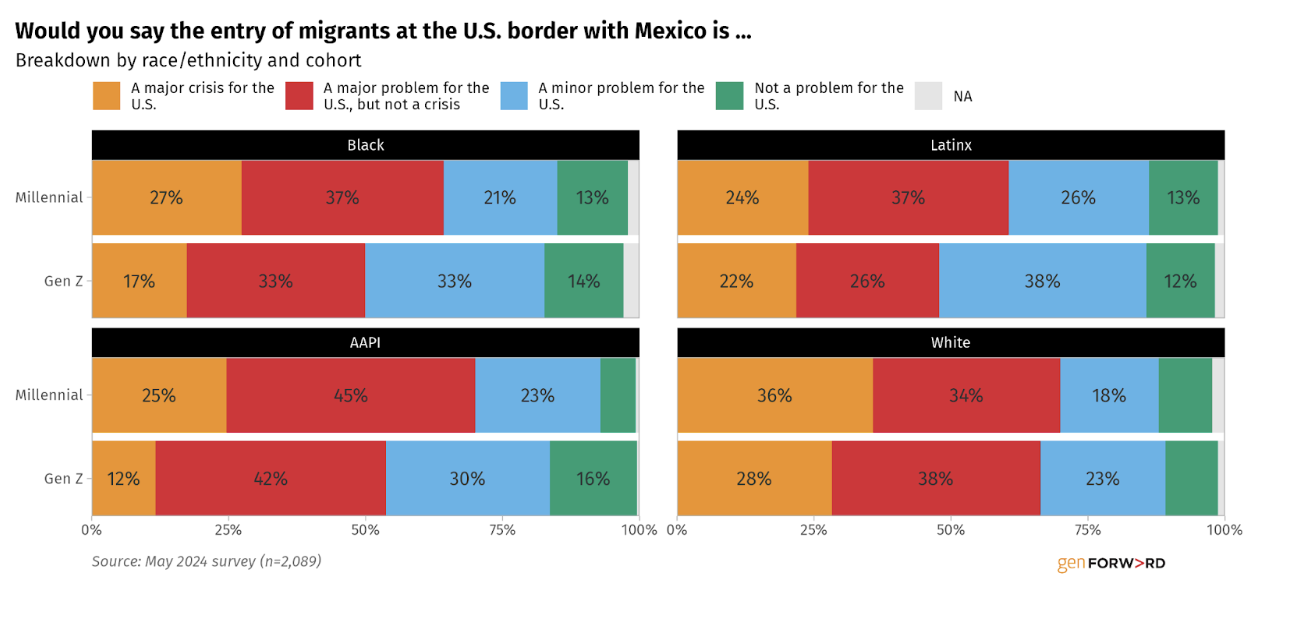
Young adults’ attitudes toward immigration acknowledge its importance in the U.S. but situate it within a wider constellation of economic and social concerns. GenForward Survey data from October 2024 indicate that while immigration has gained salience among young respondents, particularly throughout the last election cycle, it remains a relatively low-priority issue overall compared to other concerns such as economic inequality and inflation. When asked about the greatest issue facing their community, only 2% of Black, 13% of Latinx, 5% of AAPI, and 5% of white Gen Zs identified immigration as their top concern. These patterns suggest that for most young people, immigration is understood less as an isolated crisis and more as part of a broader landscape of structural inequities and economic precarity shaping their communities. For Latinx Gen Zs however, immigration was identified as the top concern facing their community. Immigration also emerged as a top concern among Latinx Millennials.
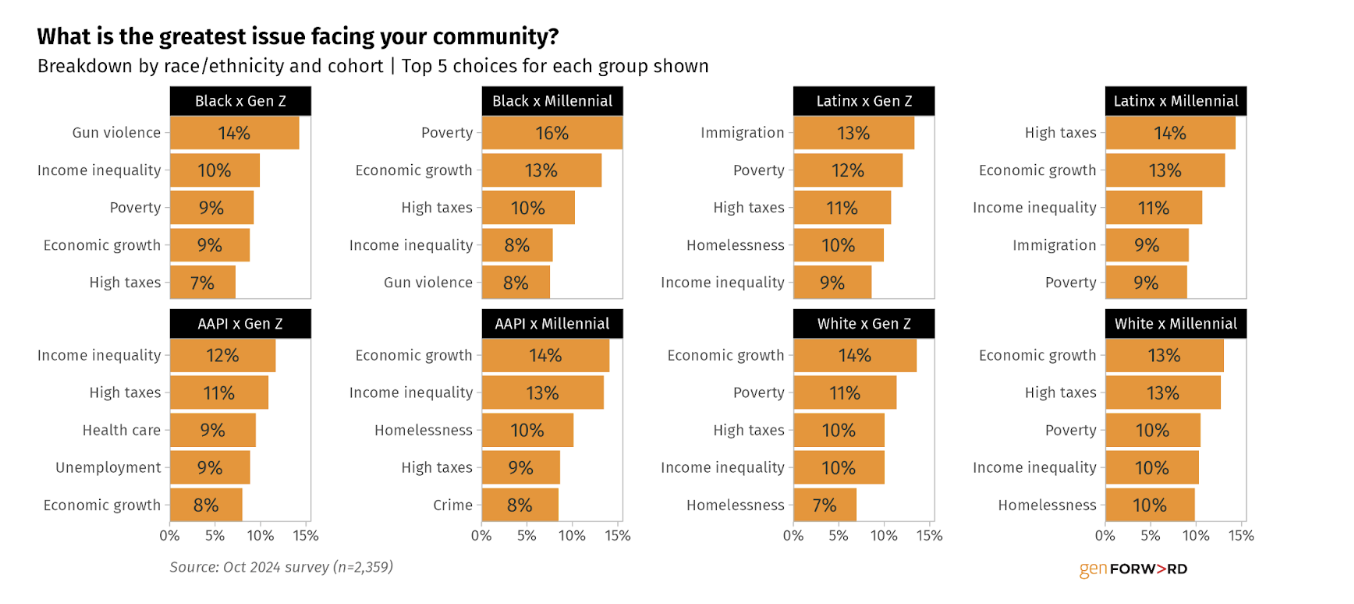
When asked about the most important problem facing the country, however, immigration emerges as the second and third most important problem for white Gen Zs (10%) and white Millennials (11%), respectively. Notably, for Latinx Gen Zs, immigration ranks as the fourth most important issue facing the country (8%) relative to the primary concern facing their community (13%). While young white and Latinx adults may view immigration as an important issue, young whites appear to view immigration as a national concern rather than one that directly impacts their community.
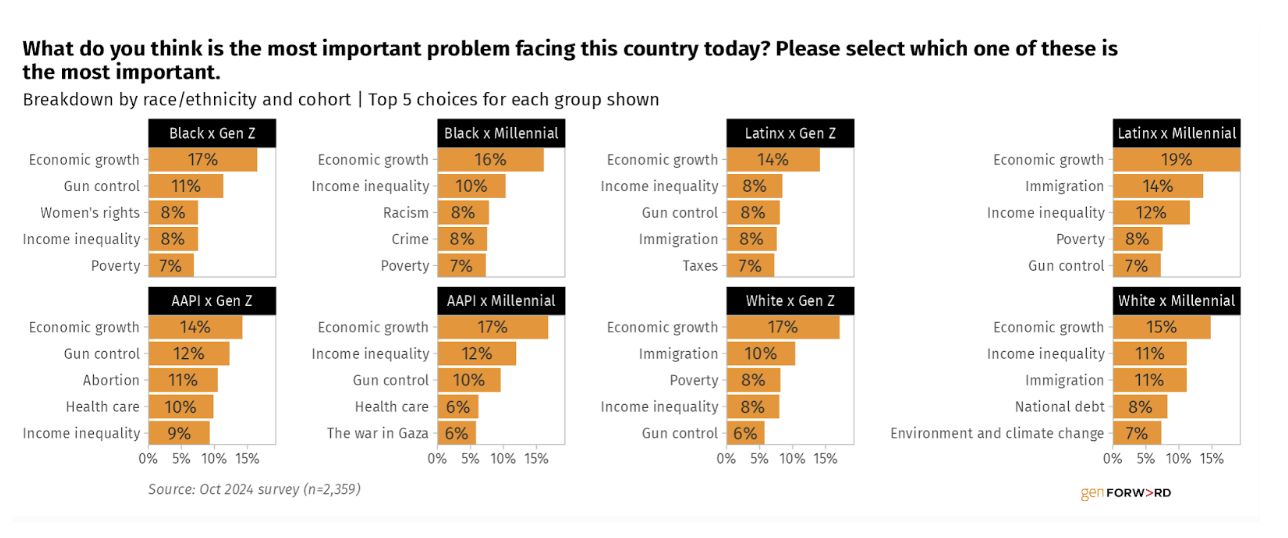
This sentiment is further reflected in GenForward Survey data from May 2024, showing that a majority of young adults across racial and ethnic groups view immigration as an important, though not dominant, factor in their political decision making process. Prior to the last presidential election, GenForward asked young respondents about how immigration might influence their presidential vote choice. The findings reveal that 54% of Black, 64% of AAPI, 53% of Latinx, and 47% of white Gen Zs consider a candidate’s position on immigration as just one of many important factors. These patterns suggest that the majority of Gen Z regard immigration as meaningful but contextual, and as part of a larger web of social and economic concerns rather than a stand alone factor in shaping their vote.
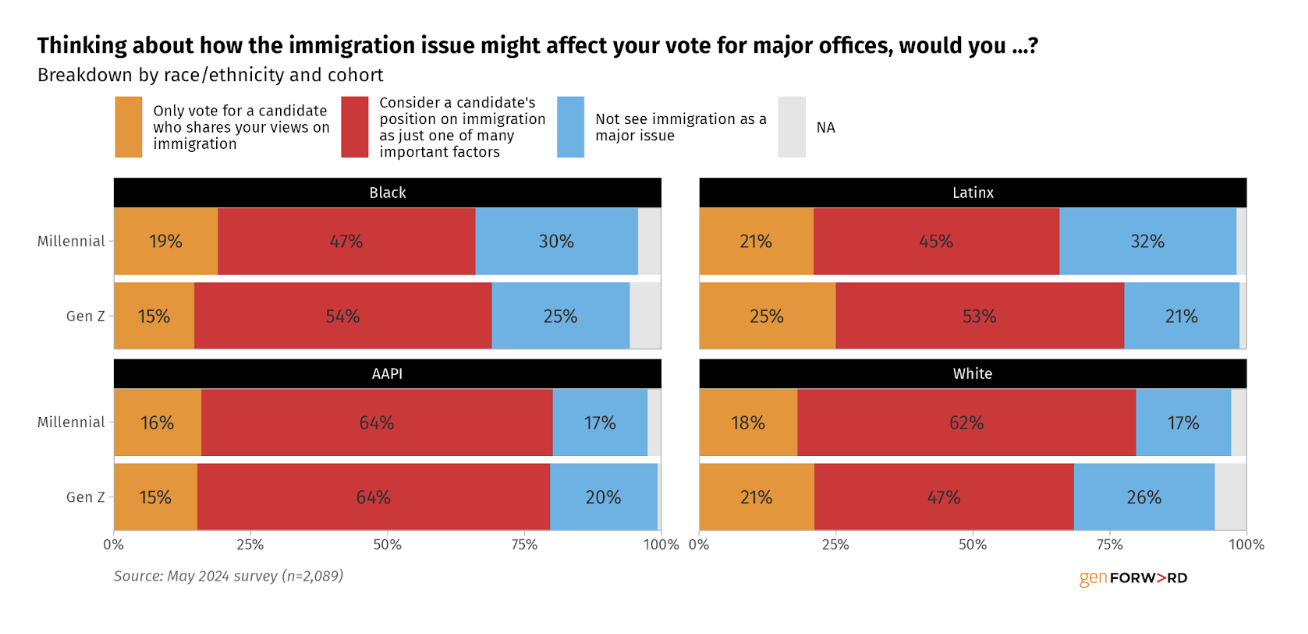
At the same time, this does not mean that young people are disengaged from or indifferent to the intensification of ICE activities. Across the country, Gen Z has been at the forefront of public opposition, taking to the streets to protest outside ICE facilities and the expansion of federal immigration enforcement. Youth-led organizations have expanded “Know Your Rights” trainings and resources to equip participants with information on how to respond if stopped by ICE or local police. Mutual aid networks have also expanded to provide groceries, essential supplies, transportation, and legal support to those afraid to leave their homes or attend court hearings.
Youth organizers are also participating in “migra-watch” networks, community support systems that monitor and report ICE activity in real time to help vulnerable community members avoid potential raids or to document enforcement actions for accountability. In downtown Chicago, thousands of protesters took to the streets in demonstrations tied to “Operation Midway Blitz,” while in New York City, large-scale protests have been held at Federal Plaza and other ICE court or detention facilities. Earlier this week, hundreds gathered to protest ICE raids on New York City’s Canal Street vendors. Videos of young people forming human chains, blocking ICE vans, and sometimes being arrested have circulated widely on social media, acting as catalysts for further protests and public outrage.
Despite the scale and intensity of ICE operations, young people are resisting the normalization of large scale arrests and detentions. Their efforts demonstrate that even when immigration is not the top priority for most young people, they are committed to holding institutions accountable and challenging the narrative that such enforcement is inevitable.
The October 2024 Survey responses were collected from September 26, 2024, through October 6, 2024, among a nationally representative sample of 2,359 adults 18-40 in the United States. The overall margin of error is ±3.13 percentage points at the 95 percent confidence level.
The May 2024 Survey responses were collected from May 10, 2024, through May 22, 2024, among a nationally representative sample of 2,089 adults 18-40 in the United States. The overall margin of error is ±3.24 percentage points at the 95 percent confidence level.
Given the importance of race and ethnicity for shaping the diverse perspectives and lived experiences of young people, we believe researchers make a mistake when they present data on young adults in a manner that assumes a monolithic young adult vote.
Diane Wong (She/Her) is an Assistant Professor in the Department of Political Science at Rutgers University, Newark. Her research and teaching interests include American politics, race and ethnicity, critical urban studies, comparative immigration, gender and sexuality, cultural and media studies, and community rooted research. Her current book project, You Can’t Evict A Movement: Intergenerational Activism and Housing Justice in New York City, focuses on intergenerational resistance to gentrification in Manhattan’s Chinatown.
More Perspectives

